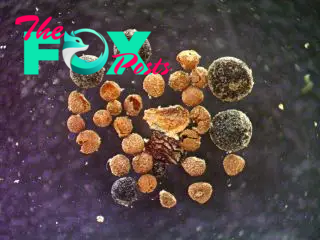Science
Fossils from Greenland's icy heart reveal it was a green tundra covered in flowers less than 1 million years ago
Today, nearly 98% of Greenland is covered in ice — but new research suggests it was virtually ice-free less than a million years ago.
Over the years, opinion has shifted about whether Greenland has been continuously covered by ice since the start of the Pleistocene epoch, roughly 2.7 million years ago. But a new fossil discovery, described in a study published Aug. 5 in the journal PNAS, "provides the first direct evidence that the center — not just the edges — of Greenland's ice sheet melted away in the recent geological past," according to a statement from the University of Vermont.,
"Our new data is the strongest confirmation yet that the ice in the center of the island vanished and was replaced by a tundra ecosystem," study lead author Paul Bierman, a geologist at the University of Vermont, told Live Science.
To make the discovery, the research team reexamined a sample of an ice core extracted in 1993. They found a plethora of fossils, including willow, fungi and insect body parts. But the most spectacular find was an impeccably preserved Arctic poppy seed.
Related: Giant viruses discovered living in Greenland's dark ice and red snow
The team was astonished by the finds. "The original plan with the sample was to measure [carbon-dating] isotopes, we didn't know we were going to find fossils," Bierman said.

One key piece of evidence was a specimen of rock spike moss (Selaginella rupestris), which today survives only on sandy and rocky places. "They need the things all plants need to grow, and they can't get those on top of an ice sheet," Halley Mastro, a graduate student at the University of Vermont and co-author of the study told Live Science. "They just wouldn't grow."
-

 Science2d ago
Science2d agoInside Capitol Hill’s Latest UFO Hearings
-

 Science2d ago
Science2d agoYou Won’t Want to Miss the Leonid Meteor Shower. Here’s How and When You Can See It
-

 Science2d ago
Science2d agoHere’s What Trump’s Win Means for NASA
-

 Science6d ago
Science6d agoWhy Risky Wildfire Zones Have Been Increasing Around the World
-

 Science6d ago
Science6d agoIt’s Time to Redefine What a Megafire Is in the Climate Change Era
-

 Science1w ago
Science1w ago4 Astronauts Return to Earth After Being Delayed by Boeing’s Capsule Trouble and Hurricane Milton
-

 Science1w ago
Science1w agoThe Elegance and Awkwardness of NASA’s New Moon Suit, Designed by Axiom and Prada
-

 Science1w ago
Science1w agoSpaceX Launches Its Mega Starship Rocket. This Time, Mechanical Arms Catch It at Landing



























